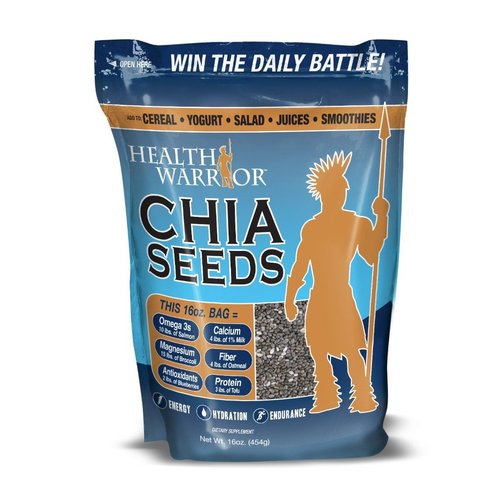7 August, 2012
Chia seeds
The “superfood” for 2012 seems to be Chia, which are seeds from the Chia plant, related to mint. I’ll start off by pointing out that seeds are fine for you and the nutritional profile of Chia is almost exactly the same as flaxseed. Fiber, fat, and a little protein.
Of course, the catch with any exotic food is that consumers don’t know what it’s worth, and they’ve never seen it, so manufacturers can charge a ton for a weird ingredient they get from third-world farmers for almost nothing. Remember goji berries? And acai? And mangosteen? And, and, and? These products were all cheap commodities before marketing teams scooped them up and presented them to us on the shelves of Whole Foods along with a long list of spurious health claims.
Chia seeds are technically full of Omega-3 fatty acids, which are good for you. The catch is that the O-3 fatty acid in chia is alpha-linolenic acid, just as in flax seeds. This isn’t used directly by the body, but converted to EPA and DHA, the fatty acids we actually need and use. Only a small fraction (around 10%) is actually converted, as a matter of fact (here’s an abstract on PubMed for the three readers who care and are still reading.) So chia is actually a poor source of omega-3 fatty acids, contrary to labeling.
You can soak chia seeds in water and drink the resulting concoction, which is also true of just about any food. You can drop most things down in a drinking glass and drink the sludge, but for fuck’s sake, why?
It’s also worth noting that the companies selling chia try to imbue the seeds with the “secrets of the ancients” mystique. Native Americans would eat chia, they say! They would bring a big bag of chia and just eat the chia when they went on trips! That’s because they didn’t have Lunchables, dipshits.


